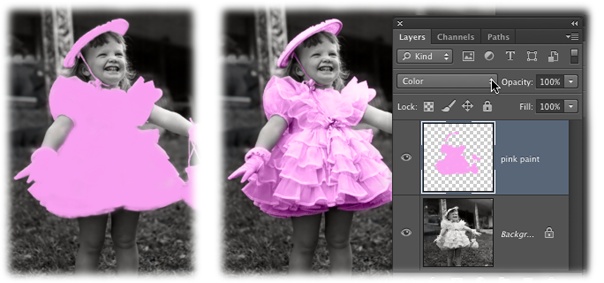Adding Color
There will be times when you want to add color that wasn’t originally part of an image, and Photoshop gives you lots of ways to do that. The techniques in this section will serve you well whether you’re colorizing a black-and-white image or adding color to an empty canvas by hand. Read on!
Note
In pre-CS6 versions of Photoshop, you could use a Variations adjustment to add color that wasn’t originally in an image. These days, that adjustment works only in 32-bit mode in Windows. To find out how to use it, visit this book’s Missing CD page at www.missingmanuals.com/cds.
Colorizing Images
Due to the expense of color film, full-color images didn’t become commonplace until the late ’60s. So chances are good that you’ve got some vintage black-and-white photos lying around, just dying to be scanned. Happily, you can use Photoshop to give them a little color (which, by the way, can be a nice side business if you get really good at it). Colorizing a black-and-white (or true grayscale) photo seems straightforward—just grab a brush and paint the image. Unfortunately, while that method adds color, it also covers up all the photo’s details, as shown in Figure 9-23, left.

Figure 9-23. Unless you change the paint layer’s blend mode, the paint covers up all the details of this girl’s cute dress (left). But once you set the blend mode to Color (right), the details come shining through.
Tip ...
Get Photoshop CC: The Missing Manual now with the O’Reilly learning platform.
O’Reilly members experience books, live events, courses curated by job role, and more from O’Reilly and nearly 200 top publishers.

